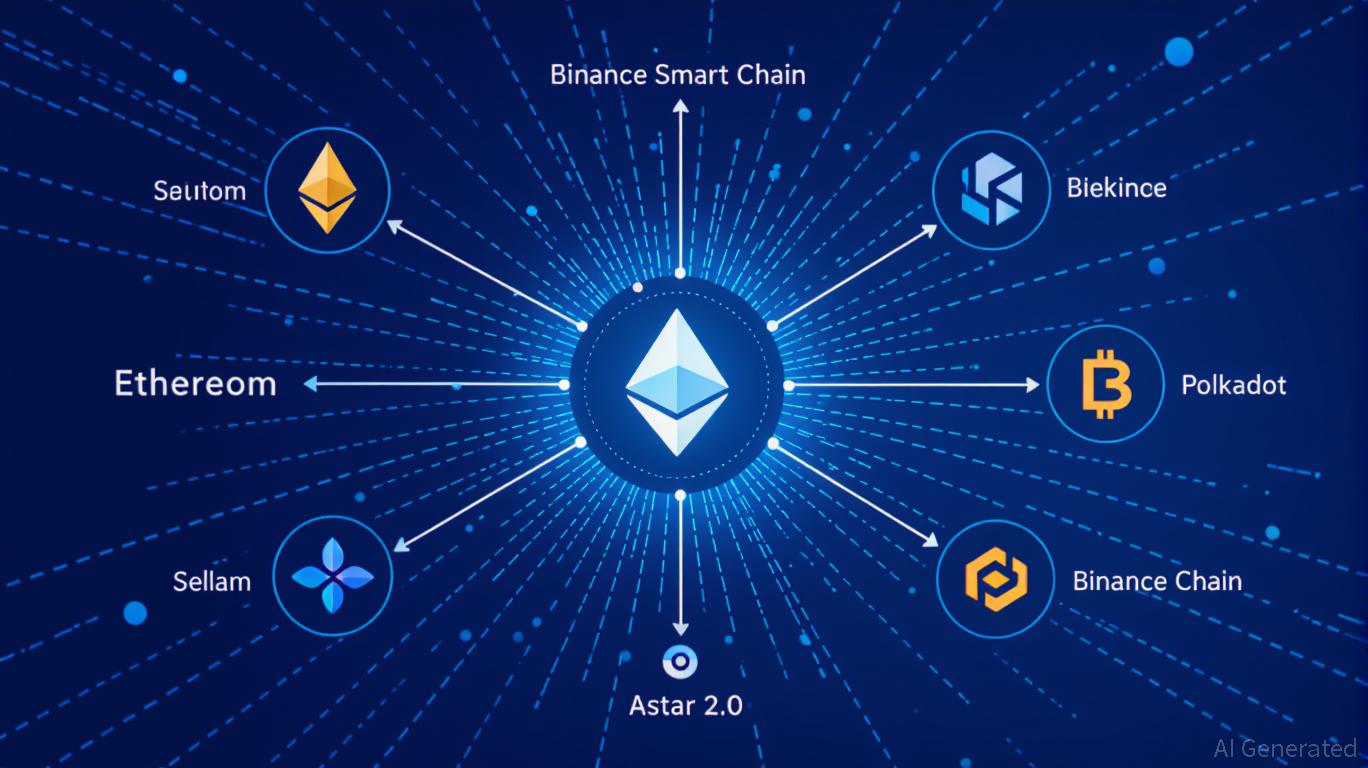Zcash Halving and Its Effects on the Market: Limited Supply, Investor Confidence, and the Value of Privacy
- Zcash's 2025 halving cut block rewards by 50%, driving a 750% price surge to $680 amid growing demand for privacy-focused assets. - Unlike Bitcoin's store-of-value narrative, Zcash's 28% shielded supply via zk-SNARKs created a "privacy premium" during crypto downturns. - Zcash's PoS transition stabilized mining economics, attracting ESG investors while Bitcoin's PoW model faces energy cost volatility. - Institutional adoption (Grayscale Zcash Trust, Zashi wallet) and regulatory resilience position Zcash
Halving events, which reduce miners' block rewards and restrict the supply of new coins, have long fascinated the cryptocurrency community for their impact on prices. Bitcoin’s halvings in 2012, 2016, and 2024 are often cited as prime examples of how engineered scarcity can shape both market sentiment and asset valuation. Now, with Zcash’s halving scheduled for 2025, the privacy-focused altcoin presents a unique opportunity to observe how these supply shocks play out in a different context—one where privacy and utility are central, with potential consequences for both its price path and the broader adoption of blockchain technology.
Scarcity and the Privacy Premium
Zcash’s 2025 halving decreased block rewards from 3.125
Bitcoin’s price rallies after halvings—like the surge to $64,900 in 2020—are often credited to its reputation as a hedge against fiat currency debasement.

Miner Economics: PoW vs. PoS and the Post-Halving Adjustments
Bitcoin’s 2024 halving
Bitcoin’s reliance on PoW remains a double-edged sword: it strengthens network security and scarcity, but also exposes miners to fluctuating energy prices and geopolitical risks. Zcash’s adoption of PoS illustrates how alternative cryptocurrencies can adapt to post-halving realities, potentially offering steadier returns for participants.
Investor Sentiment and the Privacy Narrative
The 2025 halving
Institutional interest has further enhanced Zcash’s reputation. The Grayscale Zcash Trust, with $137 million under management, and
The Road Ahead: Zcash's Position in the Crypto Ecosystem
Following its 2025 halving, Zcash’s market capitalization climbed to $10.63 billion—overtaking Monero—but it still lags far behind Bitcoin’s $1.9 trillion dominance. Bitcoin’s established role as a store of value and its integration into mainstream finance, such as spot ETFs, remain significant hurdles. Nevertheless, Zcash’s emphasis on privacy and enterprise use cases positions it as a valuable addition to a diversified crypto portfolio.
Some analysts, including Arthur Hayes, have speculated that Zcash could eventually reach $10,000, though such predictions are highly uncertain. More realistic goals may involve Zcash maintaining its 28% shielded supply and expanding its institutional partnerships. Regulatory challenges remain, but increasing demand for privacy could make Zcash’s halving a catalyst for renewed interest in privacy-focused blockchains.
Conclusion
Zcash’s 2025 halving highlights the shifting relationship between scarcity, utility, and investor sentiment within the crypto sector. While Bitcoin’s halving cycles offer a blueprint for understanding supply-driven price changes, Zcash’s privacy features and shift to PoS introduce new dynamics. For investors, the main lesson is that scarcity is only part of the equation; a blockchain asset’s value increasingly depends on its ability to solve real-world problems—whether through privacy, scalability, or regulatory compliance. As the digital asset space evolves, Zcash’s halving provides a preview of a future where privacy is not just a niche, but a core asset class.
Disclaimer: The content of this article solely reflects the author's opinion and does not represent the platform in any capacity. This article is not intended to serve as a reference for making investment decisions.
You may also like
Astar 2.0: Leading a New Generation of DeFi and Cross-Chain Advancements
- Astar 2.0 introduces a zkEVM mainnet and cross-chain interoperability, slashing gas fees and enabling 150,000 TPS with 2025 scalability goals. - Strategic partnerships with Mazda, Japan Airlines, and Sony demonstrate blockchain's real-world applications in logistics, loyalty programs, and digital asset tokenization. - Q3 2025 data shows $2.38M DeFi TVL growth and 20% active wallet increase, alongside a $3.16M institutional ASTR token acquisition. - The platform aims to solidify its role as a foundational

Aster DEX Introduces New On-Ramp: Transforming Retail Participation in DeFi
- Aster DEX integrates institutional-grade custody and privacy tech (zero-knowledge proofs) to bridge retail-institutional DeFi gaps via BNB Chain partnerships. - TVL surged to $2.18B by late 2025 through yield-bearing stablecoins and hidden orders, attracting both retail and institutional liquidity. - Despite compliance gaps and wash trading concerns, Aster's Binance alignment and Coinbase listing signals growing institutional validation.

Bitcoin News Today: Bitcoin's Decline: $100k Level Emerges as a Key Arena for Institutional Investors
- Bitcoin fell below $95,000 on Nov 13 amid profit-taking and leveraged liquidations, testing $100,000 as a critical support level. - Analysts warn further declines could intensify volatility, despite $523M ETF inflows and institutional strategies like MicroStrategy's $65B Bitcoin exposure. - Mining expansions by Hyperscale Data and Canaan Inc. contrast with Ethereum's ETF outflows, highlighting divergent institutional risk assessments. - Market focus remains on Bitcoin's ability to hold above $100,000, wi

Bitcoin News Update: Bitcoin Faces Turbulence as Fed Actions, ETFs, and Leverage Trigger $95k Drop
- Bitcoin fell below $95,000 in late November 2025, erasing 2025 gains amid macroeconomic, institutional, and technical pressures. - XWIN Research identified three drivers: fading Fed rate-cut hopes, $1.1B ETF outflows, and $600M+ leveraged liquidations after key support collapses. - Analysts warn the correction could persist until mid-2026 if regulatory shifts or Fed policy fail to stabilize markets amid extreme fear metrics.
